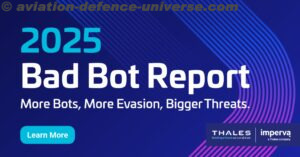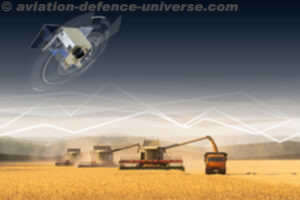- Industry takes a lead in robotic R&D
- Robotic developments aim to keep the soldier safe
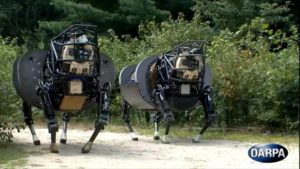
By Yash Saxena
Miami. 03 September 2020. “The best way to predict the future is to invent it” said Alan KaIn and in the 21st century, countries around the globe are embracing this paradigm and looking to implement robotics-based applications into their major defense systems and aerospace programs, allowing the world’s armies and air forces to be more efficient and effective than ever.
Kimberly Lawson’s Editorial feature “Robotics within Military Applications”, highlights that “military robots will be used to keep things effective with reduced [active] manpower.” In combat scenarios robots can help keep soldiers safe, by allowing reduction in number of active and deployed military personnel in the front lines, possibly reducing the number of human deaths in the theater of war and providing strategic tactical advantages. And it doesn’t just stop at defense; new improvements in robotic applications also branch into modern aerospace technology.
Based on Zion Market Research, “Global military robotics market expected to generate around USD 53.93 billion by 2027, at a CAGR of around 13.5% between 2019 and 2027.” That potential growth attracts major investments from multinational companies such as FLIR Systems and Raytheon Technologies. And the majority of that development and market trend is the result of the increasing implementation of robotic applications in armies throughout the world, especially armies of superpowers such as the United States and Russia.
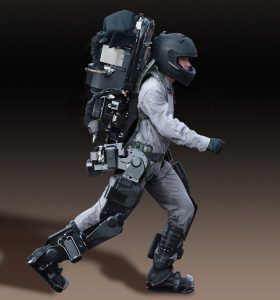
One such private companies is American based Sarcos Robotics, which was founded in 1983 by Stephen Jacobsen and Ben Wolff, who developed a high-pressure hydraulics powered soldier exoskeleton that ca lift 200lb of weight at a time and is suitable for military applications with funding from the DARPA (Defense Advanced Research Projects Agency), an agency of the United States’ Department of Defense. The technology from that exoskeleton has trickled down into one of Sarcos’s commercial products, the Guardian XO, world’s first battery powered robot that has human intelligence, instinct and judgement built in it. As per sarcos.com, it can “augment [the] operator strength without restricting freedom of movement to boost productivity while dramatically reducing injuries.” Sarcos Robotics has also developed specially designed robotic and microelectromechanical systems and related technologies for military and public safety applications. Founded in 1983, Sarcos was originally a bioengineering research institution. However, in the 1990s, founder Stephen Jacobsen shifted the focus of the company to mechanical engineering-based work, and in 2000 accepted a grant from the DARPA to develop the design for the powered exoskeleton, which was accepted and funded in 2006. The following year, the company was acquired by Raytheon, which at the time were attempting to expand into robotics research and production and would later become a renowned company focusing on defense and aerospace.
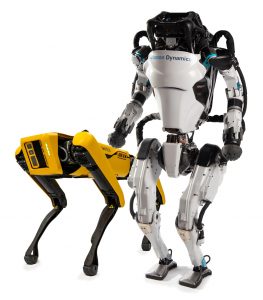
Somewhere in between, bridging the gap between civilian and military robotics is world renowned American robotics firm, Boston Dynamics. They were the company to build the “Atlas” robot, the bipedal humanoid robot that they had debuted in service back in 2013 for the US DARPA in mainly disaster response and search and rescue missions, and took the world by storm on social media. Since then, the relatively small company based in Boston, Massachusetts in the United States has been refining the physical design attributes, hardware, and intelligence capabilities of Atlas to the point where it can do a back flip, can get back up after falling down, and make minor adjustments to maintain balance like a human does, and has built other robots built for different purposes, such as Spot, a small quadrupedal canine-like robot built for a myriad of domestic services, and BigDog, another quadrupedal robot developed in tandem with the Jet Propulsion Laboratory and the Harvard University Concord Field Station and funded by the US DARPA in 2004 as a robotic pack mule to accompany soldiers in terrain too tough for vehicles.
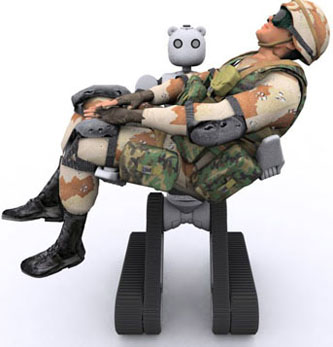
Energid Technologies is another independent defense company, currently headquartered in the United States. Their flagship product, Actin SDK, is a one-size-fits-all general robot control software that is being used to control robots for seafloor oil exploration and nuclear reactor inspection. According to Energid’s newsroom “The Robo Mantis modular robotic system from Motiv Robotics Inc. [which] is capable of quadrupedal walking as well as wheeled motion…, can have up to 38 degrees of freedom—offering unprecedented dexterity”. Energid Technologies is an engineering firm developing tools for robotic applications, machine vision, and remote-control software for use not only by defense, but has also dipped their toes in businesses such as the agricultural, transportation, and the medical industries just to name a few. The company has an international presence with clients from around the world and an international office in Bangalore, India handling their international connections. In 2019, they also showed up on Robotics Business Review’s list of the top 50 robotics companies for the year. Energid Technologies has a proven record in the industry as a robotics developer and engineering firm.
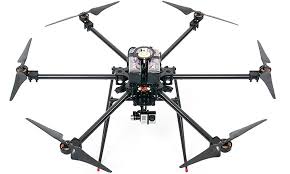
Another industry that has been able to benefit from robotic advancements and implementation of robotic applications is aerospace industry. Robotic precision and consistent machining and assembly help to make safe and reliable products, Markets and Markets Research published that “The aerospace robotics market is projected to grow from USD 1.81 Billion in 2016 to USD 4.54 Billion by 2022, at a CAGR of 16.55% during the forecast period [from 2016 to 2022 in 2015].” Just like in the defense market, this potential growth attracted the investment of large, multinational corporations such as Ensign-Bickford Industries and FLIR Systems.
In the aerospace world, Aeryon Labs, a Waterloo based Canadian company is a developer and manufacture of unmanned aerial vehicles (UAVs). Founded in 2007 with development laboratories and factories in Waterloo, Ontario. they currently commercially sell range from the Aeryon SkyRanger R60 and R80 UAV models, which are used for a multitude of purposes including surveillance and irrigation. In 2011, the SkyRangers’ predecessor, the Aeryon Scout, was provided for free to Libyan Air Force during the Libyan Civil War. And after the 2018 Hurricane Irma disaster, Aeryon deployed SkyRangers to help disaster response. Although based in Canada, they have been mainly focused on the aerospace and defense market in the United States due to the fact that their US based sister company, Aeryon Defense, in Denver, Colorado is focused on sales and support for the US Government. As of 2019, Aeryon Labs and Aeryon Defense were acquired by FLIR Systems, another American company. As per flir.com, in 2020, the parent company, FLIR Systems had been awarded a $10 million contract to “deliver dozens of its [Aeryon] SkyRaider Unmanned Aerial Systems (UAS) to the United States (U.S.) Marine Corps,”. In 2012 two of three founders, David Kroetsch and Micheal Peasgood, were awarded the Canadian Aeronautics and Space Institute’s Trans-Canada Trophy, which is the oldest aviation award in Canada.
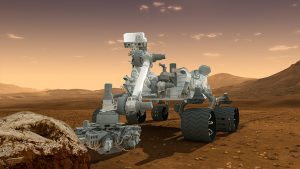
Another independent aerospace company is Honeybee Robotics. Honeybee Robotics Spacecraft Mechanisms Corporation, or just Honeybee Robotics, is a relatively small robotics company specializing spacecraft technology developer based in Brooklyn, New York in the United States. Some of their space exploration developments, such as the Rock Abrasion Tool, Sample Manipulation System, Dust Removal Tool, and Nano Drill were all used on NASA’s Mars Exploration Rovers and Science Laboratory to assist scientists on the Earth and International Space Station and Mars Rovers in conducting interplanetary research. They also worked with Bigelow Aerospace to develop a design for a solar array deployment mechanism that was part of the solar arrays of Bigelow’s Genesis inflatable space habitat. Founded in 1983 by Stephen Gorevan and Chris Chapman, the company was acquired in 2017 by Ensign-Bickford Aerospace & Defense Company, which in itself is the main aerospace and defense technology development subsidiary of Ensign-Bickford Industries.
Robots today are so much more precise than a human could ever be and are undeterred from doing their job perfectly whether it be rain or shine without fail, allowing running costs to reduce dramatically on any flying mode of transport, even outside of Earth’s atmosphere. The aerospace and defense manufacturing industries face constant pressure to reduce costs, while innovating and being on the cutting edge of technology. The use of robotics helps lower costs, improve quality while allowing for flexibility to adapt to changes in product design and production schedule. Whether it be from a market value perspective, or an application point of view, many stakeholders are interested in the development of robotic applications in aerospace and defense technology. As a result of the potential cost benefits, better efficiency, near perfect precision, and not to mention, saving time and lives on the battlefield North America sees robotics as the new dawn. With numerous independent and flourishing aerospace and defense companies supporting efficient armies in the United States and Canada, it is safe to say that North America is at the forefront of these developments.






































